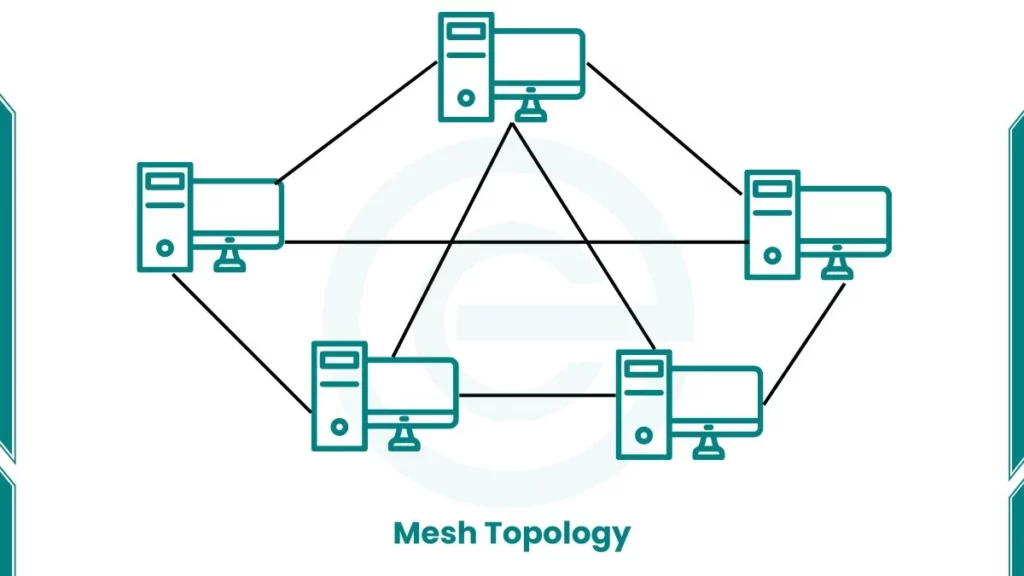Mesh topology is a network setup where devices connect directly to each other, forming a web-like structure. This arrangement allows data to travel through multiple paths, enhancing reliability and efficiency. Mesh networks are not used much in local area networks (LAN). It is mostly used in wide-area networks(MAN).

Mesh Topology Definition
In simple terms, mesh topology is a network layout where each device links to every other device in the network. This creates numerous connection points, or “nodes,” that work together to transmit data.
Mesh Topology in Computer Networks
In computer networks, mesh topology enables devices to communicate without relying on a central hub. This design boosts network performance and reduces the risk of total system failure.
What is Mesh Topology in Networking?
Networking with mesh topology involves connecting devices in a way that allows data to find the quickest and most reliable path. This setup is particularly useful in large-scale networks where data integrity is crucial.
Types of Mesh Topology
Here are two types of Mesh Topology:
1. Partial Mesh Topology
Partial mesh topology is a more practical approach for larger networks. In this setup, some devices connect to all others, while some connect only to the devices they interact with most. This balance saves resources while maintaining efficiency.
2. Full Mesh Topology
Full mesh topology is a network configuration where every device connects directly to every other device in the network. This creates a complete web of connections, offering the highest level of redundancy and reliability.
In a full mesh network:
- Each node has a direct link to all other nodes
- The number of connections grows exponentially with each new device
- Data can always find the most direct path to its destination
Wireless Mesh Topology
Wireless mesh topology applies the mesh concept to wireless networks. Devices in this setup can communicate without wires, creating a flexible and expandable network ideal for covering large areas.
Advantages of Mesh Topology
- High reliability: If one connection fails, data can travel through alternate routes.
- Efficient data transfer: Multiple paths mean faster data transmission.
- Easy expansion: New devices can join the network without major restructuring.
- Privacy and security: Direct device-to-device connections reduce the risk of data interception.
Disadvantages of Mesh Topology
- Complex setup: Connecting every device to others can be time-consuming and challenging.
- High costs: More connections mean more cables and network interfaces, increasing expenses.
- Maintenance difficulties: Troubleshooting becomes complex with numerous interconnections.
- Potential overkill: For small networks, full mesh topology might be unnecessary and wasteful.
